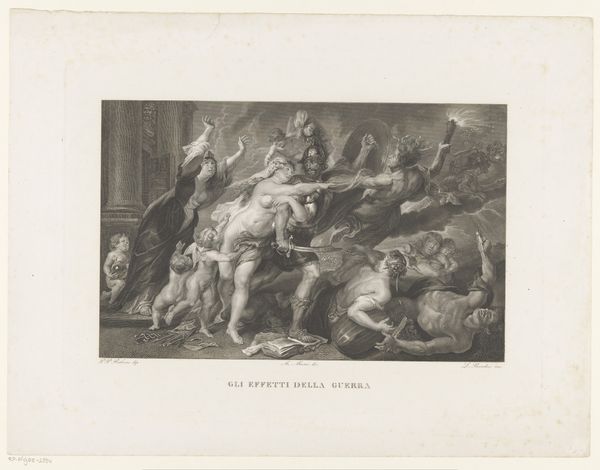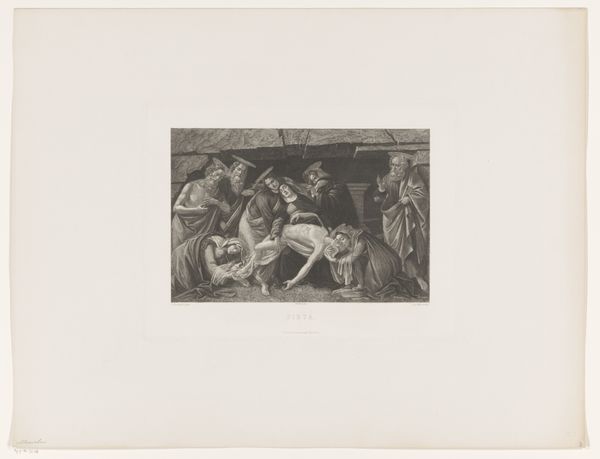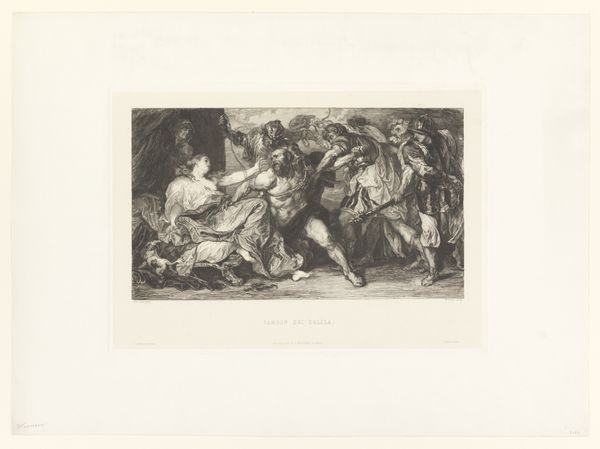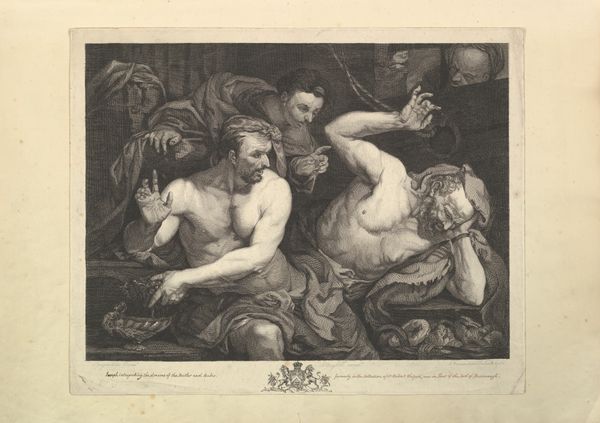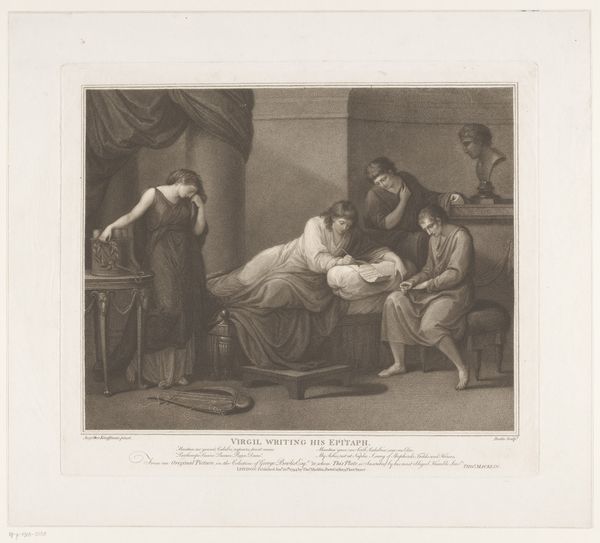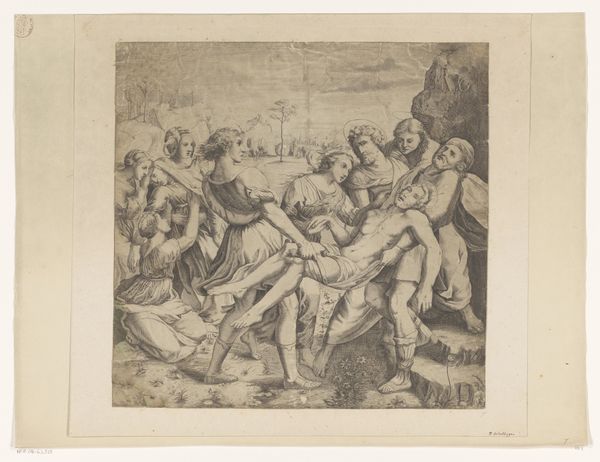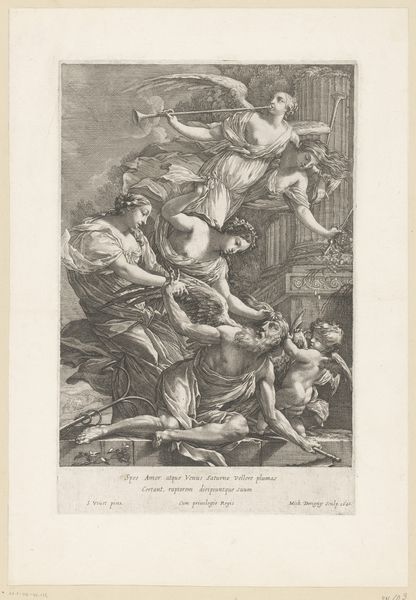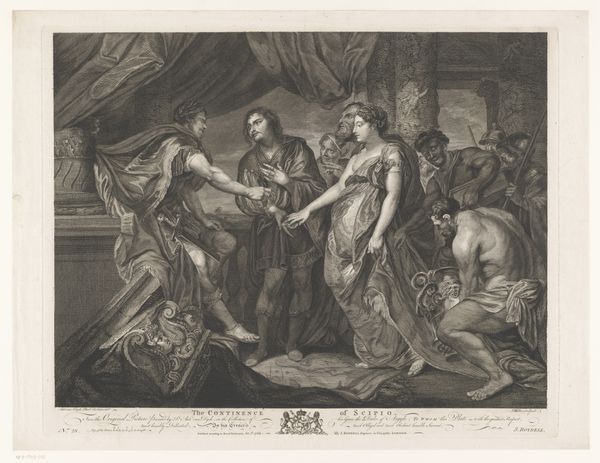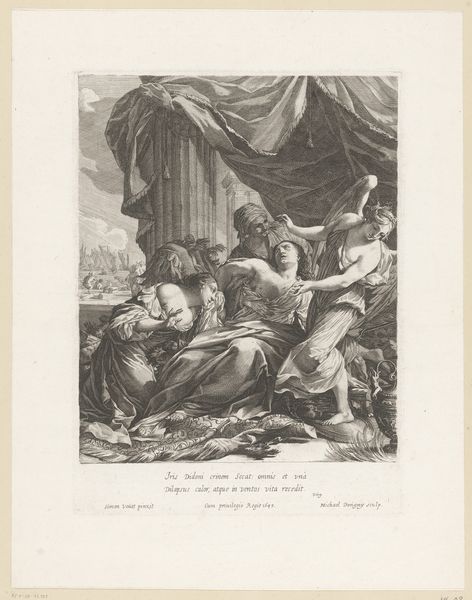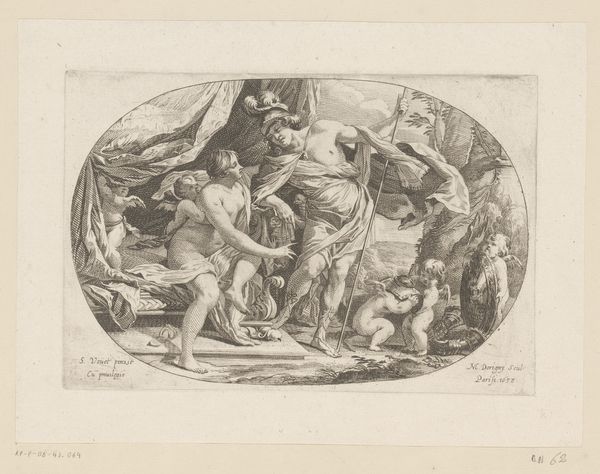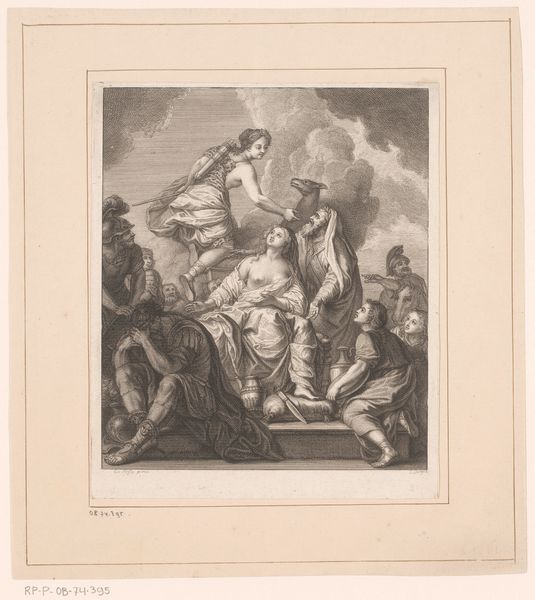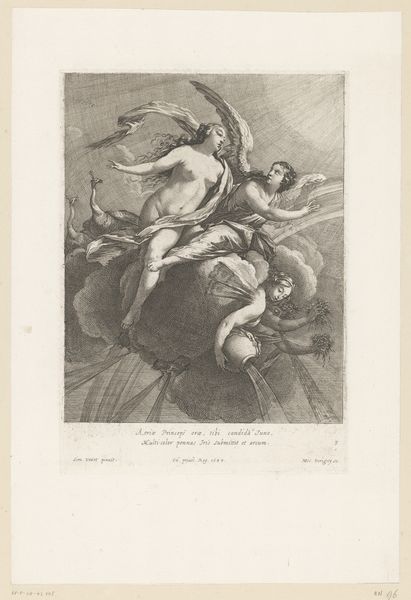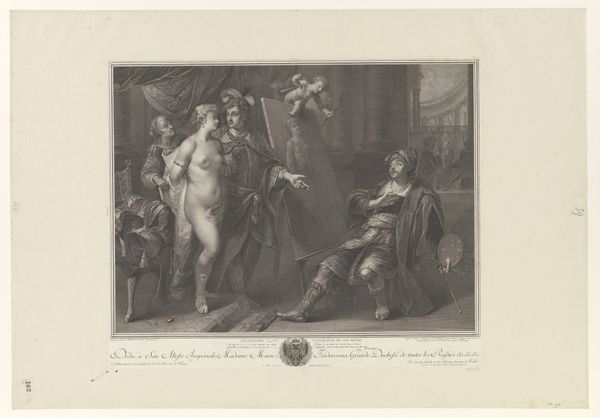
Dimensions: height 557 mm, width 746 mm
Copyright: Rijks Museum: Open Domain
Editor: This print, titled "Gevangenneming van Simson door de Filistijnen," or "The Capture of Samson by the Philistines," is estimated to have been made between 1809 and 1900. The scene is intensely dramatic; it’s hard to look away from Samson's expression of outrage, and I notice Delilah in the corner. What is your interpretation of this scene? Curator: The capture of Samson resonates deeply. Observe how the artist portrays Samson’s strength – still formidable, even as he's surrounded. This is not merely physical strength, but a symbol of inner power betrayed. Do you notice Delilah, her pose and expression? It speaks of something beyond simple betrayal, perhaps the complicated entanglements of desire, power, and destiny. Editor: I do! The men holding him back look fierce and determined to take him down. Curator: Indeed. What symbols or historical parallels might this evoke in the viewer's mind, especially given the tumultuous times this engraving was likely produced? Consider, for instance, the fall of heroes, the vulnerability of the seemingly invincible. The torchlight is very interesting in the context. It indicates both suddenness and visibility; Samson’s hidden weaknesses have been dragged into the light, for all to see. It asks if societal morals change over time or whether individuals and symbols can be reappropiated. Editor: So, it's not just a literal capture, but a symbolic one, too? Curator: Precisely. It is the rendering of a significant loss—powerlessness through internal conflict and public defeat. Delilah represents his undoing. The Philistines, those who capture him, all reflect how those surrounding us, as well as personal attributes, shape our experiences and destinies. These are not singular identities. Each element contributes to an illustration of self, as Samson loses all these identities in turn. Editor: This piece really packs a punch! I hadn't considered all those symbolic layers before. I’ll never look at this image the same way again. Curator: Excellent! And that's precisely how these symbols continue to shape and reshape cultural memory.
Comments
No comments
Be the first to comment and join the conversation on the ultimate creative platform.
